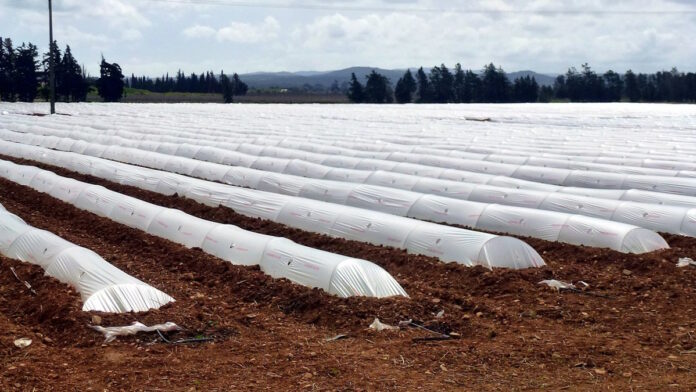According to the Food and Agriculture Organisation of the United Nations (FAO), more than 12 million tonnes of plastic are used every year in agriculture. But what about the consequences for the environment?
An international team of authors led by Thilo Hofmann from the Division of Environmental Geosciences at the University of Vienna in Austria is addressing this question. The findings were published in a recent study in Nature Communication Earth and Environment. The research shows the benefits and risks of using plastics in agriculture, and identifies solutions to ensure their sustainable use.
Modern agriculture, which is responsible for almost a third of global greenhouse gas emissions and is a major drain on the planet’s resources, is inextricably linked to plastic. The new study conducted by Hofmann, environmental psychologist Sabine Pahl and environmental scientist Thorsten Hüffer, along with international co-authors, reveals that plastic plays a multi-faceted role: from mulch films that protect plants to water-saving irrigation systems. plastic is deeply embedded in our food production.
Enhancing yields and shrinking footprints
From securing plants with clamps to protecting them with nets, plastic has found its place in all areas of agricultural production. The use of plastic in agriculture undeniably conserves important resources. The front-runner is mulch films, which account for about 50% of all agricultural plastics. Mulch films not only control weeds and pests, but also preserve soil moisture, regulate temperature, and improve nutrient uptake, thus helping to reduce the ecological footprint of agriculture. In China, not using mulch films would require an additional 3.9 million hectares of cropland to maintain the status quo of production.
But the intensive use of plastics in agriculture also has its downsides: impaired soil fertility, dwindling crop yields, and the prospect of toxic additives seeping into the food chain. Conventional plastics persist in the environment, with residues accumulating in soil. Tiny plastic particles can be ingested by plants. Although research into the uptake of nanoplastics is still in its infancy, preliminary data suggests plastics can enter our food chain through agriculture.
Slow and calculated transition
In navigating the challenges of plastic in agriculture, the spotlight falls on a strategy that champions the rational use of plastic, its efficient collection post-use, and the innovation of cutting-edge recycling methods, the authors state in the new study.
“In cases where plastics remain in the environment, their design should ensure complete biodegradation. Furthermore, it is crucial that toxic plastic additives are replaced by safer alternatives,” Hofmann said.
While bio-based materials are a tempting alternative, they are not without caveats. A rushed pivot to such materials without adequate consideration of their life cycles could put more strain on ecosystems and food networks.
The measures proposed by the authors are in line with global initiatives like the UN Plastics Treaty. Adopting these practices will foster more sustainable use of plastics in agriculture, according to the scientists. While a complete replacement of plastics is untenable at present, the judicious use of alternatives with minimal environmental impact seems to be a promising way forward. With mandatory monitoring, technological advancement and educational initiatives, reducing our reliance on plastic and its adverse environmental impacts should be possible.
“Uptake, metabolism and accumulation of tire wear particle-derived compounds in lettuce,” Stephanie Castan, Anya Sherman, Ruoting Peng, Michael Zumstein, Wolfgang Wanek, Thorsten Hüffer, Thilo Hofmann; Environmental Science & Technology (2023)
DOI: 10.1021/acs.est.2c05660
Jim Cornall is editor of Future Food Today and publisher at Ayr Coastal Media. He is an award-winning writer, editor, photographer, broadcaster, designer and author. Contact Jim here.






